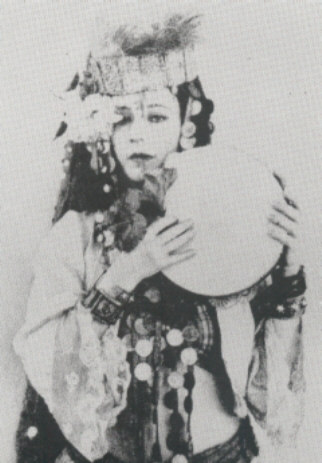About Riqs, Daffs, and Other Frame Drums
Frame drums are among the oldest percussive instruments in the world and were the first type of drum. Images of frame drums are found around the world in ancient sites. Pictures of frame drums are found in in both ancient Egyptian and Mesopotamian art and have been in use consistently since then. Before the invention of goblet drums (like the tabla) these were generally the only drum in use. They remain an important part of traditional folk music in the Middle East / North Africa (MENA) region and many surounding areas. As music and istruments evolved simple frame drums did not provide as much tonal variety as musicians desired and they created new frame drums with snares (like the bendir) or cymbals inside (like the riq or mazhar) or with metal rings attached to the inside of the frame (like the daira). Many of these innovations in the frame drum are accredited to Persians in the Safavid period (between 1501-1736 CE).
Traditional construction of a frame drum involves taking wet wood (usually whatever is the most common local wood) and banding it around a hot metal barrel. It is glued together and then forms the frame. The heads are generally made from an animal skin. In the Middle East this is often a goat skin or sheep skin but can also be made from fishskin or even camel skin. The skin is stretched taughtly over the frame and is usually glued in place. It can also be held in place with tacks (or nails with large heads) or by string which is woven through holes in the skin and the frame. Modern frame drums are usually made with a fiberglass frame and replacable mylar heads. Like the tabla natural heads have a more pleasing earthy quality but can be quite tempermental in different temperatures and weather conditions. Synthetic heads carry the sound much farther and produce the same sound quality in nearly every temperature and weather condition.
There are a variety of frame drums used in the Middle East. Most frame drums have a depth between 2-4 inches (about 5-10 cm). Smaller frame drums usually range between 8-10 inches (about 20-25 cm) while medium/large frame drums usually range 18-20 inches (about 45-50 cm). They are played vertically upright and are held using a special pinch-like grip with the thumb inside the frame and the middle and index fingers on the outside. The ring and pinky fingers can also be used to support the drum but when playing drums with cymbals attached they are used to play additional accents on the cymbals instead. Traditional frame drums are sometimes decortaed with mother-of-pearl inlays or simply painted designs and the heads are sometimes decorated with henna patterns.
The same basic patterns that are played on tablas are also played on frae drums. In larger groups the frame drum (which usually has a deeper tonal quality) is used to accentuate the baseline rhythym while a table and zills are used to accentuate filler. However many of the accents and fills are playable on frame drums as well and they are cabable of creating fairly complex rhythms.
Here's some examples of different types of Middle Eastern frame drums (if the text is too small, right click the image and select "view image"):



